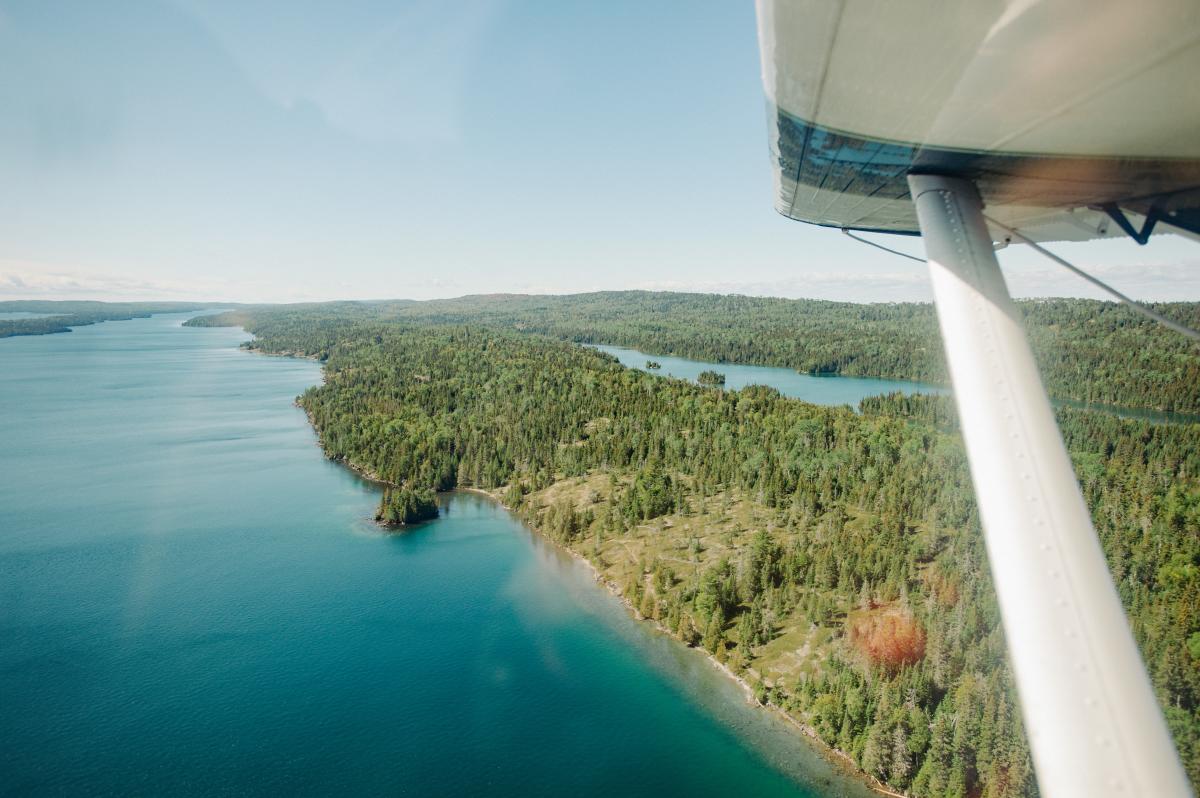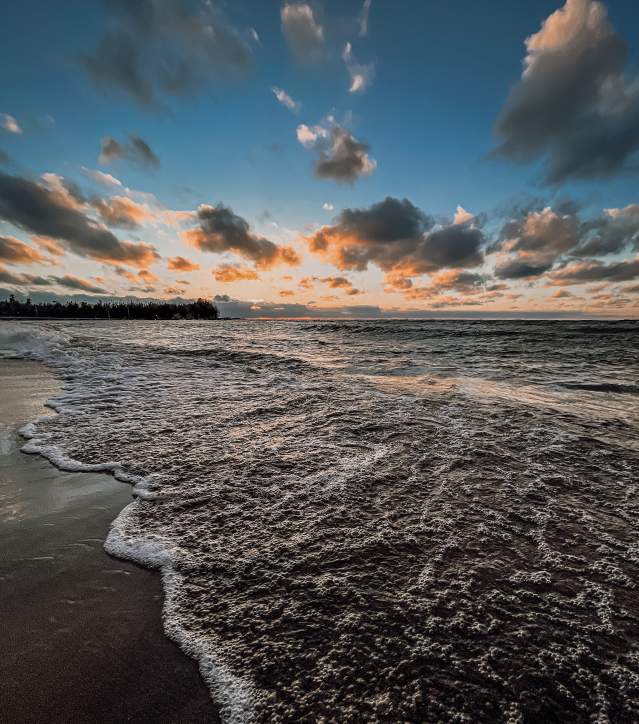Your browser is not supported for this experience.
We recommend using Chrome, Firefox, Edge, or Safari.
Lake Superior
In the native Ojibwe language Lake Superior is called “Gichigami” meaning the “great water.” The world’s largest fresh-water lake, Superior surrounds the Keweenaw still shaping the lands and its people. Much of what makes the Keweenaw a special place is owed to the “Big Lake.”
What Makes Lake Superior So Special?
Lake Superior is dynamic and seemingly inspires both tranquility during periods of calm and awe when her skies turn dark. Some days the surface of her waters look so still, it appears as glass. On the windiest days waves can reach as high as 25-feet in height. Her vastness and mood make resemble an ocean (without the sharks and the saltwater). Highly regarded for its clarity and purity, locals swear that taking a regular dip has rejuvenating powers.

Lake Superior has always served as a source of sustenance for the people who lived along her shore. Her cool, clear waters are home to numerous species of fish that anglers covet. Today, many of the Keweenaw’s restaurants regularly feature locally caught whitefish, perch, walleye and lake trout for visitors to enjoy.
Summer Lake Superior Activities
During the summer, the Keweenaw’s 125 miles of pristine Lake Superior shoreline serve as places of respite for locals and travelers to lounge along sandy and rocky beaches. Calm days on Superior are perfect for sea kayaking trips around Copper Harbor or fishing excursions out to Stannard Rock Lighthouse. Smaller waves also make it easy to look for treasures on the beach like Agates, Yooperlites, interesting pieces of driftwood, and even chunks of beach glass.
Not only does Lake Superior create mesmerizing sunrises and sunsets, but the vastness of her waters offer exceptional opportunities for viewing the night sky. It’s not uncommon to see the Northern Lights dance across the horizon, and you will be amazed by how easy it is to spot the Milky Way on a clear night. Increasingly Lake Superior attracts Midwest surfers seeking to ride the raw power of her waves.
Winter Lake Superior Activities
In the winter, Superior generates incredible amounts of lake-effect snow drawing skiers, snowmobilers, and other winter sports enthusiasts to take advantage of more than 270 inches of annual snowfall. The lake absorbs heat from the sun during the Keweenaw’s long summer days. When cooler air flows over her waters during the winter, moisture is pulled up into the lower atmosphere generating snowstorms churning several inches of snow per hour.
Perhaps even more important, Lake Superior moderates the Keweenaw’s climate during the winter. Unlike neighboring communities across the lake, the Keweenaw’s winter temperatures remain mild. The lake’s temperature serves as buffer keeping the average temperature in the mid-20s even in the depth of winter. This makes enjoying all that snow much more comfortable.
Isle Royale
In the heart of Lake Superior rests Isle Royale National Park. An island isolated thanks to Lake Superior, the park’s wilderness has remained pristine allowing visitors to truly experience nature. Visiting the island requires a sea plane or ferry, but getting there is half the fun.

Lighthouses
Superior’s waters have always been used for transport. During the mining boom, lighthouses were erected to help ships safely navigate her turbulent waters. Today, visitors can still admire and often tour, these lonely sentinels while traveling throughout the Keweenaw and Isle Royale.
Many people know that the Keweenaw Peninsula is legendary for the amount of lake-effect snow it receives each winter. Lesser known but equally impressive is that the…

